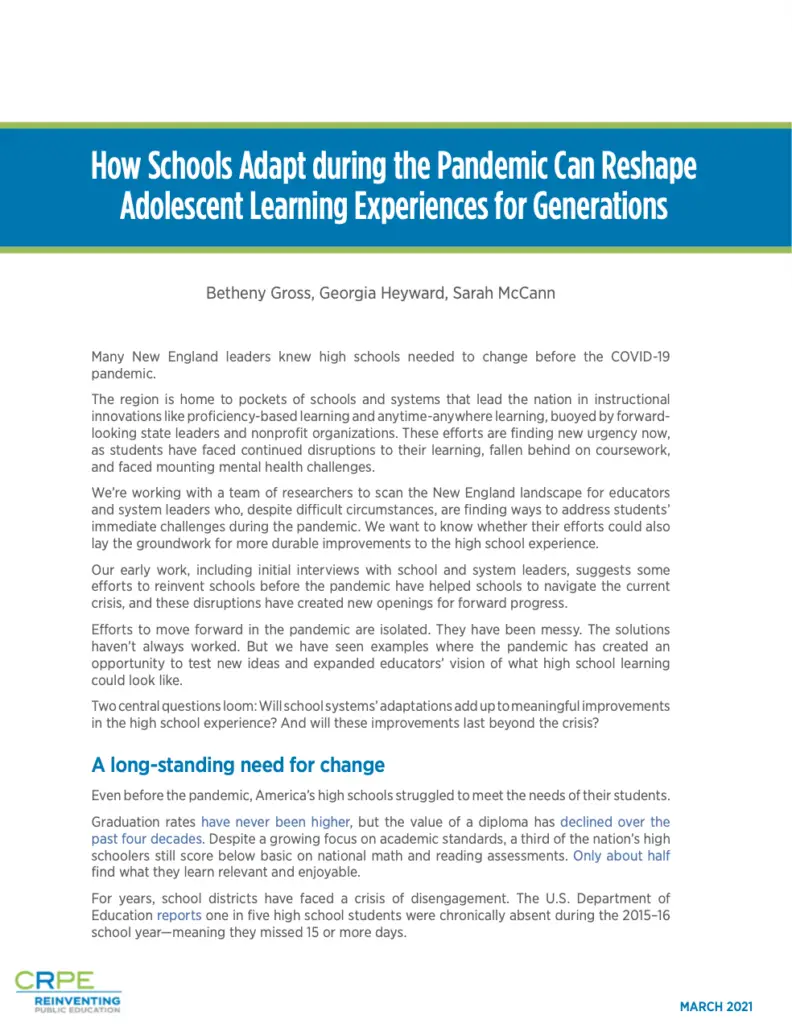This brief, informed by interviews with school and system leaders in the New England region, suggests some efforts to reinvent schools before the pandemic have helped schools to navigate the current crisis.
To increase the odds that innovation prevails in the face of rising fatigue and pressure, we must better understand the adaptations schools and systems have made. We must understand if and how these adaptations are shifting the fundamental priorities and structures of schools.
CRPE and our research partners at CRPL, The Christensen Institute, The Education Trust, and SRI International are taking up this line of inquiry with New England’s high schools, asking:
- What new instructional, support, and resource strategies are high schools using? What practices do high schools shed? What facilitated these changes?
- Do these new strategies improve students’ learning and school experience?
- Do these new strategies provide for more equal access to learning opportunities?
- Are schools and systems elevating the voice of students and parents in unprecedented and productive ways?
- Are new contributors—community partners, parents, students—seen with equal value to the traditional educators and school leaders?
- Which state and local policies are aiding schools in implementing new strategies?
- Critically, do these new strategies become a new way of doing work in schools? Do they replace less effective strategies? Do they become embedded in the policies, systems, resource allocation strategies, and norms of high school learning and adolescents’ experiences?
The answers and insights we gather from our Think Forward New England fieldwork will help us to understand how high schools can use this moment to redesign our high schools and create a better learning environment for adolescents.







Voice and choice: New England students highlight which pandemic-era changes should stay—and which should go
Lisa Chu
Research Analyst, CRPEMaddy Sims
Senior Fellow, CRPE